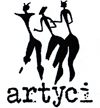Foreword by Charlie Brittain
I first met Zuna in Belgium, at an international dance festival where we were both teaching at the invitation of our friend and colleague, Milan Tomášik. Zuna led her workshops ‘Dancing Qigong’, and I taught workshops on dance improvisation, technique, and ‘Integrated Well-being for Dancers’. I had heard much about Zuna’s unique work from Milan over the years, and greatly enjoyed our exchanges between workshops. Clearly, our common-ground was a passion for sharing our knowledge and experience with dancers and movement practitioners in order to enhance performance and improve health and well-being holistically. While united in these aims, our journeys through dance and healing are different. Alongside my professional career in dance, my healthcare practice is predominantly modern and evidence-based, which spans bodywork, myofascial release, medical acupuncture, human biomechanics, sports rehabilitation, emergency care and acute medicine. As I have journeyed deeper and more broadly into different healing sciences and traditions, I have become increasingly fascinated by the ancient healing arts that predominated for centuries. I was excited to hear of Zuna’s new book, and touched at the invitation to introduce it. Traditional Chinese Medicine, and Taoism, is one of the ancient life sciences that I have long-wished to explore and now, through Zuna’s vision, I have been able to find a guide that seamlessly traverses my interests as both mover and healer.
The TAO of MOVEMENT is a stimulating companion for curious minds and creative bodies. Zuna illuminates the ancient wisdoms of Tao, while offering the opportunity for modern-day movers to consider such knowledge through the reality of their own practice. Zuna expertly applies her lived experience of a life in movement through the lens of Chinese Medicine, and offers a perspective on how we can enrich and support our lives both in, and through, movement. This book offers both valuable insights for movers who want to become holistically sustainable, and departure points for exploring our own work, whether creative, performative or health-focussed. Drawing on the rich breadth of Tao, and its countless connections, it provides foundational knowledge and extrapolates ancient Chinese wisdom into the daily life of movers seeking enriched sensory experiences, digestible practical knowledge and concrete steps towards enhanced health and performance.
Movement is synonymous with life, from the microscopic division of single cells, all the way to our ability as organisms to travel in space, perceive time and express and embody consciousness. We could perceive ourselves in a continuum of movement, an analogy of flow, encompassing the entirety of nature itself; the rushing of water, the flowing of air and the steady growth, and decay, of plants. The TAO of MOVEMENT relates foundational Taoist principles directly to movement, offering a range of imagery and trailheads which are applicable across the breadth of movement styles and disciplines. It looks at Tao through the perspective of movement, and movement through the perspective of Tao, offering guidance for movers to cultivate deeper somatic sensing, and awareness of the micro and macro within and around them. Through this lens we are able to consider the aspirations and potential of our creativity and wellness. The possibilities for application of such knowledge for those working in movement disciplines is vast, and equips the reader with original ways to interact with their physicality through the long-respected principles of Traditional Chinese Medicine.
The TAO of MOVEMENT takes us to the wisdom at the heart of an ancient model of living and makes available teachings which have served people for millennia. Zuna offers a beautiful, nuanced insight, founded on knowledge, philosophy and deep respect for the work, which speaks for itself. Akin to the vast fascial system of the body, human life is a dynamic web of interacting experiences, factors and relationships. The book explores all aspects of life, including the all too familiar story of injury and cyclical damage to the body, offering practical guidance underpinned by the theoretical and traditional principles of the discipline.
The more knowledge and experience one accrues in the study of movement, health and physiology, the more clear the link becomes between our holistic wellness and physical articulacy. The many aspects of one’s health and well-being are uniquely inter-dependant, and in my experience of both dance and healthcare, the relationship between one’s performance and health is intimate, and direct. When movers enter the studio, they enter with the whole of themselves.
Zuna expertly guides us through the layers of the body and the factors that affect it, always from the perspective of the whole, whether traversing the challenges of an ageing body, or navigating injury, overwhelm and crisis. This book is contextualised in an era of global unrest, undeniable planetary crisis and growing public health concerns. Society urgently needs to consider its approach to the core questions of life to stand any chance of finding balance, health and harmony, for ourselves, our communities and Earth herself. It is an opportune moment to open up to a traditional wisdom that can serve us now and for the future – one where connectedness, calm and creativity can predominate. It is rare to find an author who so expertly weaves the detail of such a rich ancient knowledge while continually honouring its place in the whole; this is part of the magic of this book, and, perhaps, of Tao itself.
The book The Tao of Movement will be published by Singing Dragon in September 2024.
